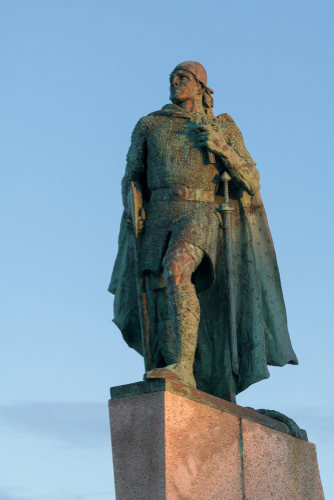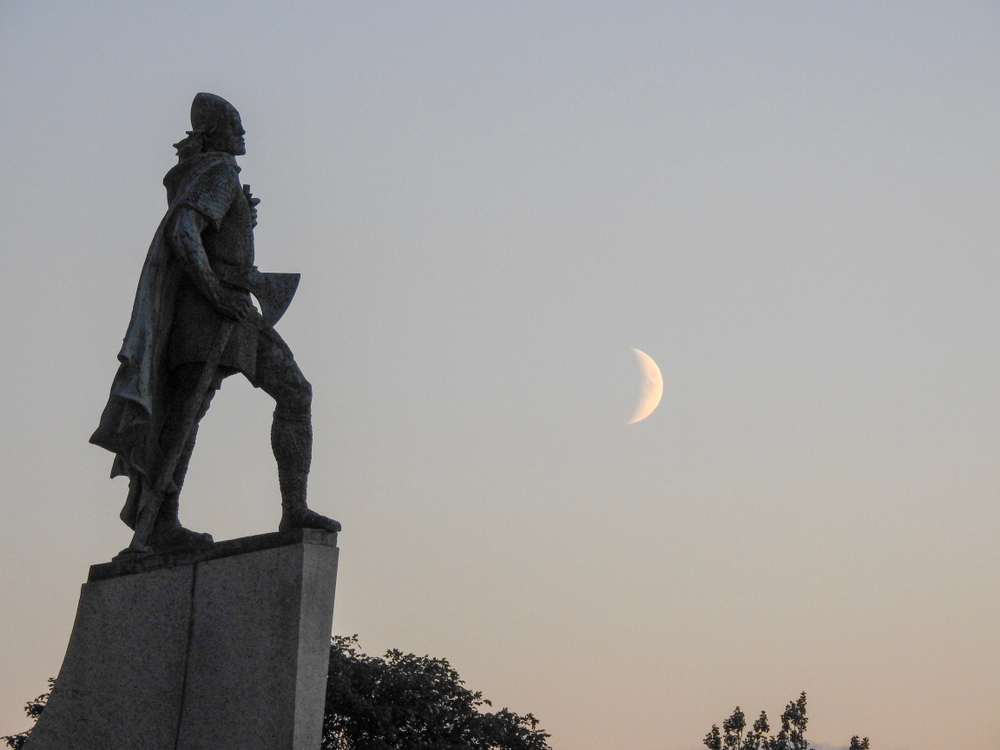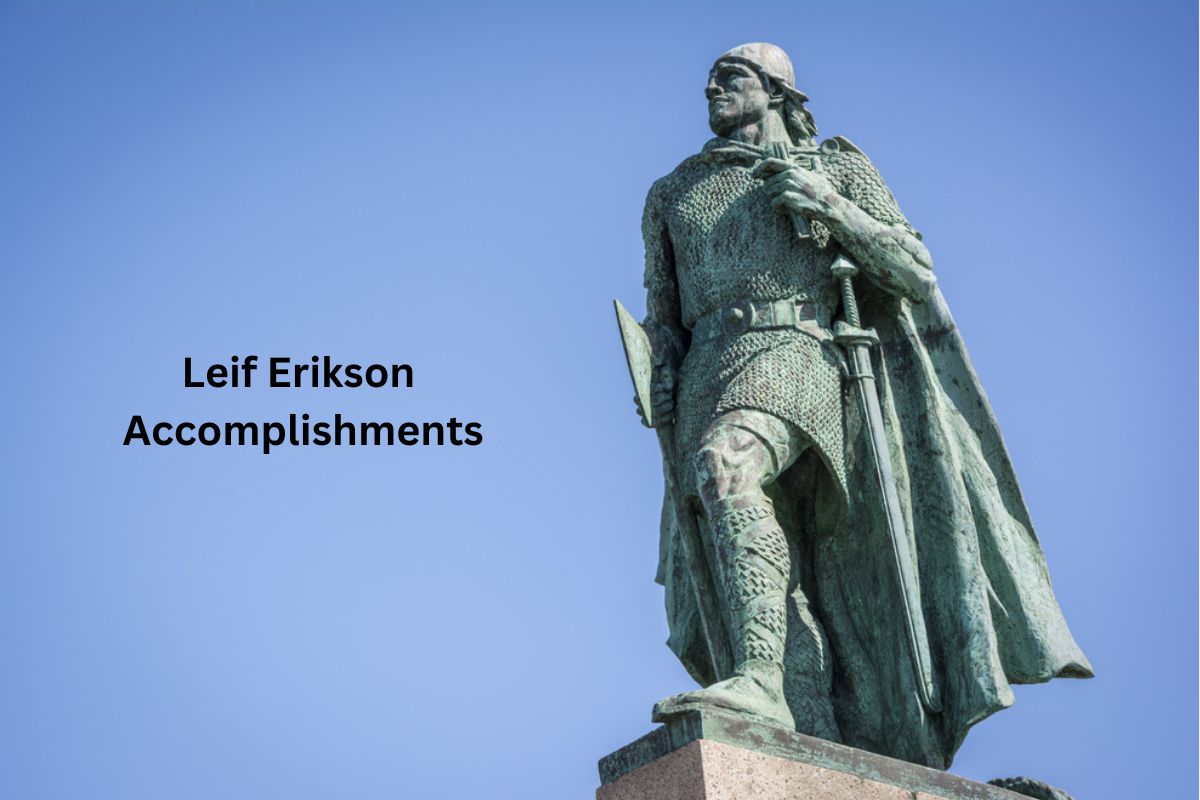Leif Erikson, a Norse explorer born around 970-1020 AD, stands as a prominent figure in the annals of exploration and discovery. His remarkable accomplishments span a range of historical, cultural, and navigational spheres.
From being one of the first Europeans to set foot in North America to his pioneering efforts in introducing Christianity to Greenland, Erikson’s legacy reverberates through time.
His resourcefulness in trade, depiction in sagas, cultural influence, and role in paving the way for further European exploration of the New World all contribute to a comprehensive understanding of his historical significance.
In this exploration, we delve deeper into the multifaceted accomplishments of Leif Erikson, shedding light on his enduring impact on history and culture.
Accomplishments of Leif Erikson
1. Discovery of North America
Leif Erikson is renowned for his discovery of North America around the year 1000 AD, making him one of the earliest European explorers to reach the continent.
Also Read: Leif Erikson Timeline
While the exact location of his landing is debated among historians, it is widely believed to be in the area of what is now Newfoundland, Canada.
His voyage opened up the possibility of European exploration and eventual settlement in North America, predating Christopher Columbus by nearly 500 years.

2. Exploration of Vinland
Upon reaching North America, Leif Erikson and his crew explored the region, which he named “Vinland” due to the abundance of wild grapes they found.
Vinland is believed to have encompassed parts of modern-day Newfoundland and potentially other nearby areas.
Also Read: Ivar the Boneless Facts
Erikson and his crew are thought to have established a small settlement in Vinland, marking one of the earliest known European attempts at colonization in the New World.
3. Viking heritage
Leif Erikson came from a family with a strong Viking heritage. He was the son of Erik the Red, who is credited with establishing the first Norse settlements in Greenland.
This heritage of exploration and settlement played a crucial role in shaping Erikson’s own adventurous spirit and his willingness to undertake perilous voyages to explore new lands.
The Viking legacy of daring exploration and seafaring prowess is a key aspect of Erikson’s historical significance and his ability to navigate the North Atlantic to reach North America.
4. Conversion to Christianity
Leif Erikson played a pivotal role in the spread of Christianity among the Norse settlements in Greenland. Prior to his conversion, the Norse settlers in Greenland practiced pagan Norse religion.
Erikson’s conversion to Christianity is significant because he not only embraced the new faith himself but also used his influence and leadership to promote Christianity among his fellow Norsemen.
His conversion contributed to the Christianization of Greenland and the wider Norse world, marking a significant cultural and religious shift in the region.
5. Navigational skills
Leif Erikson was renowned for his exceptional navigational skills. These skills were essential for his successful voyages across the North Atlantic.
In an era when navigation was primarily reliant on natural landmarks, celestial observations, and a deep understanding of wind and current patterns, Erikson’s ability to guide his ships to North America and back to Greenland demonstrated his expertise as a navigator.
His proficiency in navigation allowed him to undertake daring journeys that expanded the Norse exploration of new lands.

6. Leadership
Leif Erikson was not only an accomplished explorer and navigator but also a respected leader among the Norsemen.
He was chosen to lead the expedition to Vinland, a testament to his leadership qualities. His ability to command the loyalty and respect of his crew and fellow settlers was crucial for the success of the voyages.
Erikson’s leadership skills were instrumental in ensuring the safety and cohesion of the expedition, from the initial exploration of Vinland to the establishment of the settlement there. His leadership legacy is an important part of his historical significance.
7. Resourceful trading
During his exploration of Vinland, Leif Erikson and his crew engaged in trade with the indigenous people they encountered. This trade likely involved the exchange of various goods, such as furs, timber, and other natural resources found in the region.
Erikson’s ability to establish trade relations with the local inhabitants demonstrated his resourcefulness and adaptability as an explorer.
Trade was an essential aspect of Viking culture, and Erikson’s willingness to engage in trade with the native population reflected his pragmatic approach to exploration and settlement.
8. Historical accounts in sagas
The accounts of Leif Erikson’s voyages and accomplishments have been preserved in Icelandic sagas, particularly the “Saga of the Greenlanders” and the “Saga of Erik the Red.”
These sagas are historical narratives written in the medieval Icelandic tradition and provide valuable insights into the early Norse exploration of North America.
While these sagas may include some legendary elements, they are important sources for understanding Erikson’s journeys and their significance in the context of Viking exploration.
9. Cultural legacy
Leif Erikson’s exploration of North America has left a lasting cultural legacy, especially in the regions where he is believed to have landed. Many places, monuments, and events in North America are named after him, celebrating his role as one of the first European explorers to reach the continent.
Leif Erikson Day, observed on October 9th in the United States and Canada, is an annual commemoration of his achievements. His legacy also extends to the celebration of Viking heritage and Norse culture, which remains a source of fascination and pride for many people today.
10. Pioneering exploration of North America
Perhaps one of Leif Erikson’s most enduring accomplishments is his pioneering exploration of North America. He set the stage for subsequent European explorations and colonization of the continent, even though his own settlement in Vinland was relatively short-lived.
Erikson’s journey to North America demonstrated that a transatlantic crossing was possible and paved the way for later expeditions by other Europeans seeking to explore and settle in the New World. His exploration marked the beginning of a new chapter in world history, as it opened up opportunities for further contact and interaction between the Old World and the Americas.
